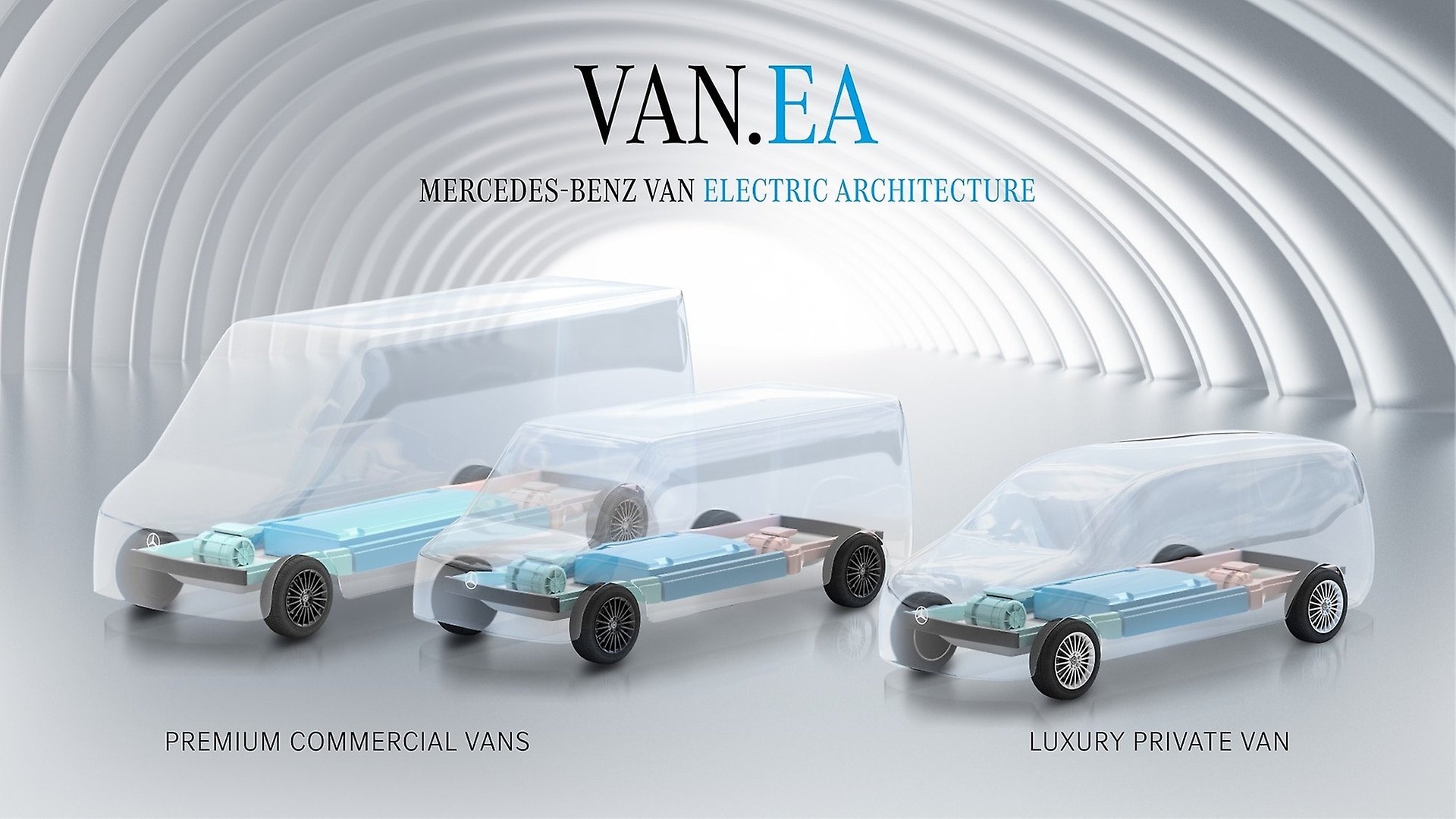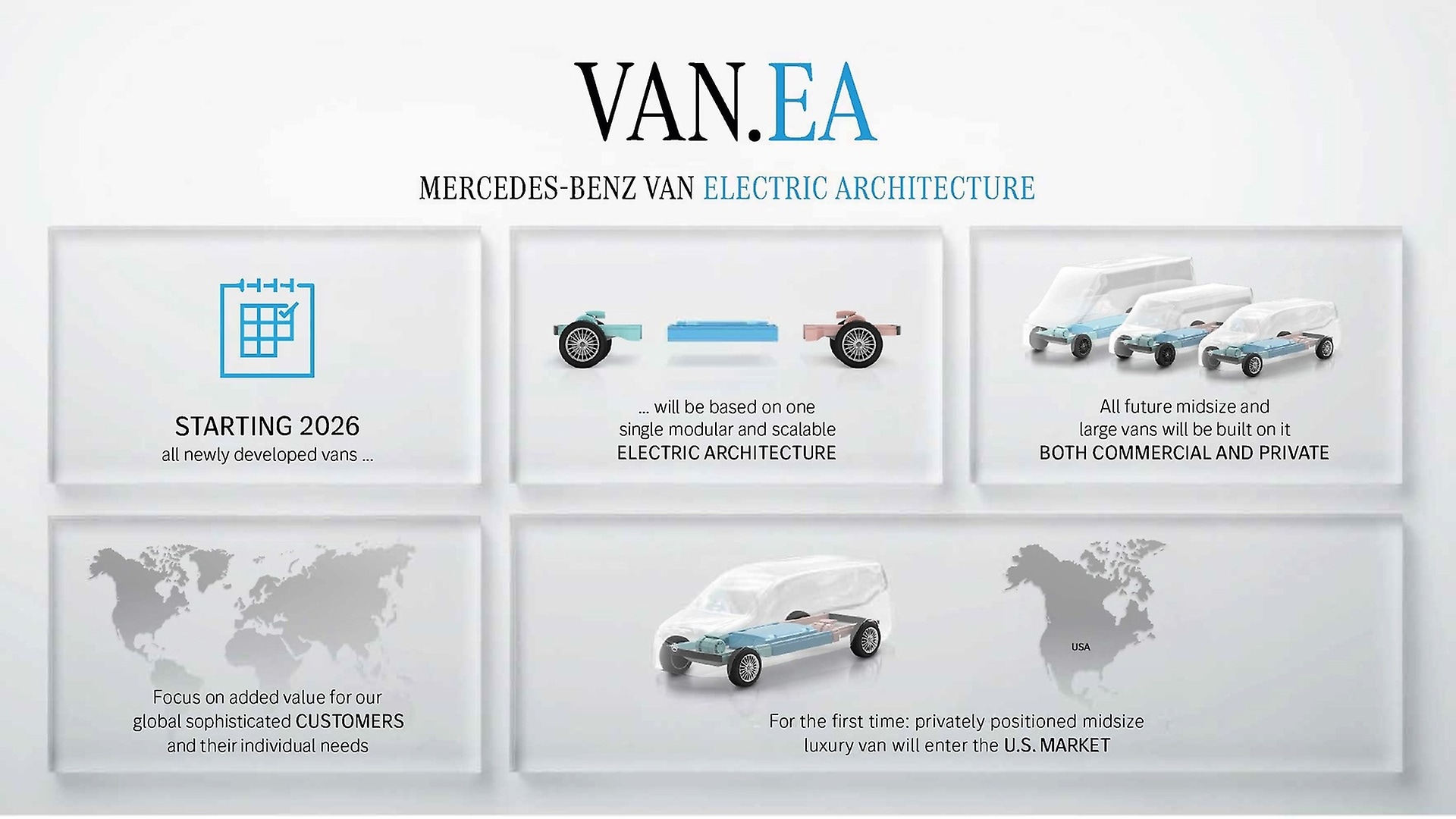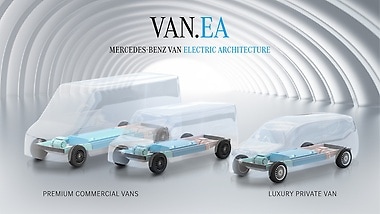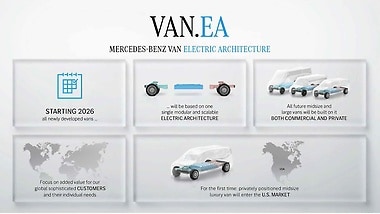Mercedes-Benz Vans aims for further profitable growth in its most important regions. Today, Europe is already the strongest market with a 60% share of total sales worldwide. Mercedes-Benz Vans wants to strengthen its position here. Looking ahead, substantial growth potential is being seen in the U.S. for premium commercial large vans and in China for luxury private vans.
In the U.S., Mercedes-Benz Vans aims to profitably and substantially increase sales by 2030 as well as to expand the portfolio by adding VAN.EA-based commercial vans to the lineup.
Both in the U.S. and China, Mercedes-Benz Vans plans to offer VAN.EA-based private vans in an unparalleled luxury positioning to more strongly cater to the expectations of its sophisticated customers.
In the U.S., Mercedes-Benz Vans will offer for the first-time ever a privately positioned midsize luxury van.
Mercedes-Benz Vans will also expand the portfolio of ex-factory camper vans with a new model line of fully electric midsize and large camper vans, based on VAN.EA. The division aims to define the new industry standard with its international camper business partners around the world.
The worldwide courier, express and parcel services market with an annual growth of 6 8% per year is a strong driver for a fully electric intra- and inter-urban mobility. Mercedes-Benz Vans focuses on the upper price bands of the CEP industry, where it intends to offer a VAN.EA CEP-specific version ex-factory for the first-time ever.
,xPosition=0,yPosition=0.5)






,xPosition=0.5,yPosition=0)